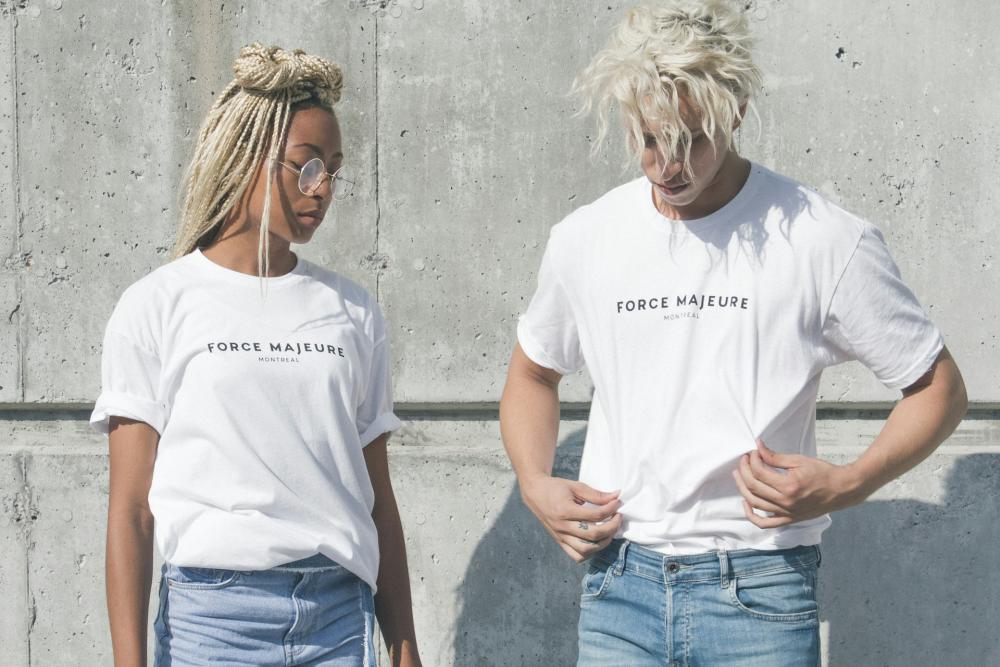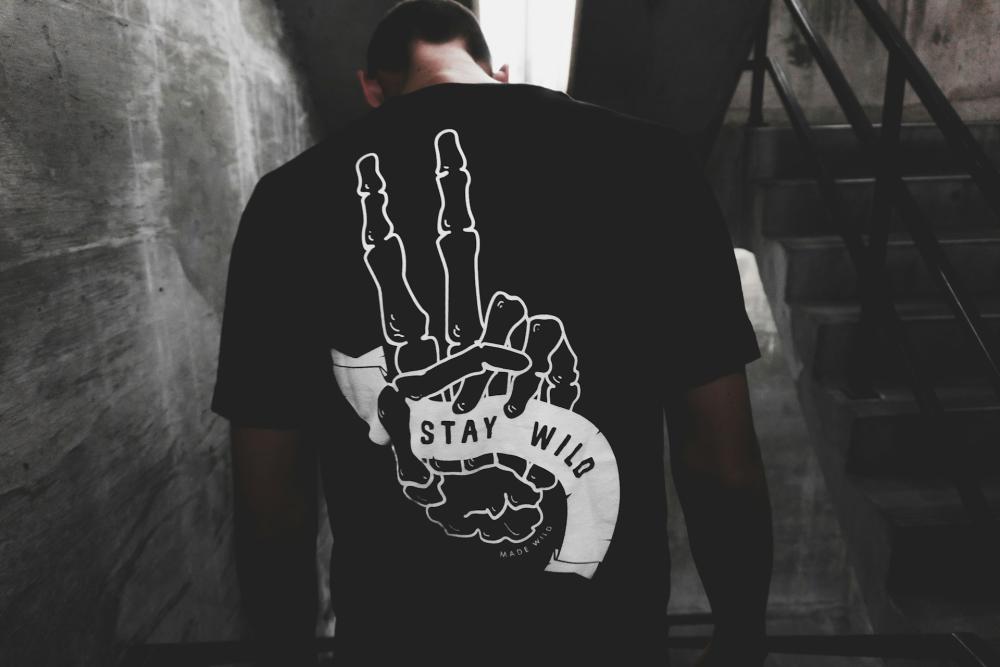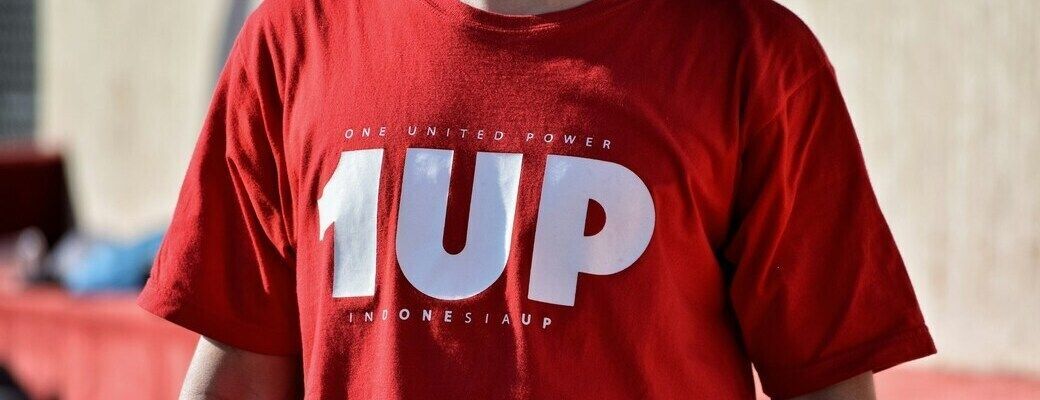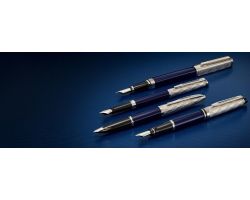T-shirt logo placement is an essential consideration for businesses, brands, and designers looking to make an impact. Where you choose to place your logo affects not only the visual appeal but also the effectiveness of your branding.
This guide explores various logo placements, design tips, and considerations to help you make the best decision for your custom T-shirts.
What is the best placement for a T-shirt logo?
The best placement for a T-shirt logo depends on branding needs. The left chest is ideal for subtle, professional use, while the centre chest placement creates bold, attention-grabbing designs.
Key Takeaways:
- T-shirt logo placement affects visibility, branding, and comfort.
- Common design placements include left chest, centre chest, full front, and back.
- Each placement suits different branding goals and target audiences.
- Consider design consistency, wearer comfort, and T-shirt type.
- Collaborating with designers and gathering feedback ensures optimal placement.
Standard Logo Placement Options

Left Chest Placement
The left chest placement is one of the most popular choices for logos on T-shirts. This placement is subtle, professional, and ideal for corporate uniforms, sports teams, and casual wear.
The left chest logo is easy to see without being overpowering, making it a reliable option for both small and large-scale branding.
Benefits and Popularity
A left chest logo gives a polished and corporate look that suits a range of industries, from hospitality to tech. It’s a great way to keep branding visible but not too intrusive.
Common Uses and Industries
This placement is common in corporate uniforms, event staff shirts, and promotional apparel.
It creates a professional appearance and is versatile enough to be used across various sectors.
Centre Chest Placement
A centre chest logo creates an eye-catching look that grabs attention immediately. This placement works well for larger logos or graphics intended to make a statement.
Visual Impact and Design Considerations
Centre chest logos tend to be bolder and more noticeable, perfect for branding that needs to stand out.
When choosing this placement, consider using high-quality print methods such as screen printing or direct-to-garment (DTG) to ensure the t-shirt design remains sharp and vibrant.
Examples of Effective Use
This option is a popular choice among sports teams, music bands, and streetwear brands looking for stylish and functional merchandise. Many also customise branded wireless earbuds to enhance their brand presence while offering a practical product.
Centre chest logos often serve as the focal point of the T-shirt, creating a strong brand presence.
Full Front Placement
Full front placement covers a larger area of the T-shirt, making it perfect for promotional designs or intricate graphics. This type of placement works well for branding campaigns that require maximum visibility.
When to Use Full Front Logos
Full front logos are suitable for promotional events, charity T-shirts, and bold graphic designs. They are particularly effective when the T-shirt is meant to be a statement piece.
Tips for Maximising Visual Appeal
Ensure the design remains balanced and doesn’t overwhelm the entire front of the shirt. Use proportionate logo sizes to maintain aesthetics and prevent distortion.
Back Placement
Back placement can be either upper back or full back. This type of logo placement is popular for sports teams, events, and casual branding.
Upper vs. Full Back Placement
An upper back logo is subtle and best suited for T-shirts that also have a front logo.
A full back logo, on the other hand, is ideal for designs that need to be more prominent and visible from a distance.
Use Cases for Back Logos
This placement works well for team uniforms, event merchandise, and charity run T-shirts.
The back placement allows for larger logos or detailed graphics, providing ample space for creativity.
Creative and Unconventional Logo Placements
Sleeve Placement
Sleeve logos are perfect for brands looking for a subtle yet impactful branding option. Sleeve placements work well on both short and long-sleeve T-shirts.
Enhancing Brand Subtlety
A logo on the sleeve adds a touch of uniqueness without dominating the overall design. It’s particularly popular in the sportswear industry and among brands that favour minimalist aesthetics.
Industries That Use Sleeve Logos
Sports teams, tech companies, and fashion brands often use sleeve logos for their uniforms or branded merchandise.
This placement can also be an ideal spot for promotional messages or secondary branding elements.
Side and Hip Placements
Placing a logo on the side or hip area of a T-shirt creates a modern and trendy look. Although unconventional, this placement is gaining popularity in fashion circles.
Modern and Trendy Looks
Side and hip placements are perfect for brands aiming to set trends or cater to a younger demographic.
This placement works best with vertical logos or designs that can align with the body’s natural shape.
Design Challenges to Consider
Designers must ensure that the logo aligns correctly and isn’t distorted when the T-shirt is worn. Proper testing and mock-ups are essential to get this placement right.
Hem Tag and Pocket Placements
These placements offer a minimalistic branding option that appeals to fashion-focused brands.
Minimalistic Branding Options
A logo placed at the hem or on a pocket can add subtle elegance to the design.
This placement is often used for clothing lines that aim for understated branding.
Appeal to Fashion Brands and Niche Markets
Pocket and hem tag logos are popular in lifestyle and fashion brands that want their T-shirts to have an upscale feel without being overtly branded.
Factors to Consider When Choosing Logo Placement
Target Audience
Understanding your target audience is crucial. For example, a corporate audience may prefer a left chest logo, while a younger, trendier crowd might appreciate side or sleeve placements.
Purpose of the T-Shirt
Is the T-shirt for a promotional event, team uniform, or corporate use? The purpose should guide your decision on logo placement.
T-Shirt Type and Size
Logo placement may vary based on the type of T-shirt (e.g., fitted, oversized, unisex). Make sure the placement complements the shirt’s cut and print size to avoid awkward positioning.
Design and Print Considerations

Logo Size and Scale
Ensure that the logo is proportionate to the T-shirt size. A logo that is too large or too small can disrupt the overall look of the shirt.
Print Method Compatibility
Certain printing techniques work better with specific placements. For instance, embroidery is ideal for left chest logos, while screen printing is great for full front designs.
Colour and Contrast
Choose colours that contrast well with the T-shirt to maximise visibility. Dark logos on light shirts and vice versa are generally more impactful.
Common Mistakes to Avoid
Understanding and avoiding common mistakes in T-shirt logo placement can make a significant difference in the quality and professionalism of your final product.
One major mistake is overcrowding the design. Trying to fit multiple logos or design elements on a single T-shirt can make it look cluttered and visually unappealing. To avoid this, focus on one or two key placements that emphasise the most important branding elements.
Another common pitfall is inconsistent placement, especially when producing T-shirts in bulk.
Variations in logo placement across a batch can disrupt brand consistency and make the final products appear poorly executed.
To prevent this, establish clear placement guidelines and conduct quality checks during the production process. Precision and consistency are key to maintaining a professional look.
Wearer comfort is another crucial factor often overlooked. Logos placed in areas that come into contact with seams or high-movement regions can cause discomfort or irritation, especially if the print method adds thickness or texture.
Always test sample T-shirts to ensure that the logo placement does not compromise comfort.
Lastly, not considering the type of T-shirt can lead to placement issues. For example, what works well on a standard-fit shirt might not translate effectively to a fitted or oversized T-shirt.
Adjust placements as needed to suit different shirt styles, ensuring that the logo remains aesthetically pleasing and balanced.
Case Studies and Real-World Examples
Looking at real-world examples of successful logo placements can offer valuable insights. Brands like Nike and Adidas have perfected the art of strategic logo placement by using left chest and sleeve logos to achieve subtlety while ensuring high visibility.
These placements align with their brand image, creating a balanced professional look that resonates with consumers.
On the flip side, some brands have learned from less effective logo placements. For instance, companies that placed their logos too low or in unconventional spots on the T-shirt found that the garments appeared awkward or off-balance.
This misstep can detract from the overall appeal of the T-shirt and weaken brand perception.
A successful case study involves promotional T-shirts used at charity events. Organisations often opt for centre chest or full back placements to make the event name and logo highly visible.
This approach maximises exposure, creating a memorable impression and reinforcing the brand's association with the cause.
Studying these examples helps identify what works and what doesn’t in T-shirt logo placement.
Applying these placements guides your own branding efforts and ensures your T-shirts make the impact you intend.
If you are targeting college students, you must know about these college merchandise ideas to promote your brand via t-shirts.
Tips for Customising Logo Placement
Customising logo placement to fit your brand's identity and goals can elevate the effectiveness of your T-shirts. Start by assessing your brand image.
For instance, if your brand leans towards minimalism and sophistication, a small pocket or hem tag logo may be more fitting than a large centre chest design. These subtle placements add a touch of elegance and are favoured by high-end and lifestyle brands.
Working with professional designers can provide significant advantages. Designers bring expertise that can help you visualise the most suitable placement options for your brand.
They can also advise on adjustments to ensure the logo placement looks cohesive and polished. Mock-ups and prototypes are invaluable in this stage, as they allow you to see how the final product will look and make any necessary changes before going into production.
Gathering feedback from initial samples or focus groups is another key step. Input from employees, customers, or a dedicated test group can reveal unexpected issues or highlight particularly well-received aspects of your logo placement.
This feedback loop helps refine your approach and ensures that the final product aligns with your branding objectives.
Lastly, don’t be afraid to experiment with unconventional placements.
While traditional spots like the left chest or full front are reliable, exploring creative placements such as sleeves or hip areas can set your T-shirts apart and attract attention. Balance creativity with practicality to maintain comfort and avoid design mishaps.
Apart from T-shirts, you can place your logo on many other clothing items to promote your brand. With Promo Store, you can print your logo on the branded fleece, branded jackets, branded gilet, branded sweater or even on personalised trousers.
Frequently Asked Questions:
1. What is the best placement for a T-shirt logo?
The best placement depends on your branding goals. Common choices include the left chest for a subtle look or the centre chest for a bold, eye-catching design.
2. Why is T-shirt logo placement important?
Logo placement affects how your brand is perceived, its visibility, and wearer comfort. Choosing the right placement ensures effective branding and a positive user experience.
3. What factors should I consider for T-shirt logo placement?
Consider the target audience, T-shirt type, logo size, and design balance. Collaborating with designers helps in choosing the most effective placement.
Conclusion
T-shirt logo placement is more than just a design decision; it’s a strategic choice that impacts branding, visibility, and overall appeal.
By understanding the different placement options and their implications, businesses can make informed decisions that resonate with their target audience and align with their brand image. Careful planning and collaboration with design experts can make all the difference in creating impactful and memorable T-shirts.







